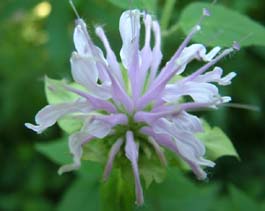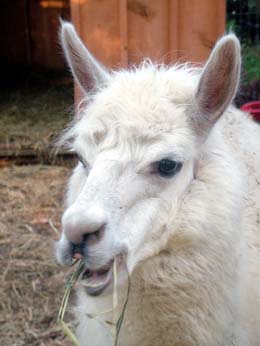|
|
||||
Birds,
Butterflies, and Booze: I am met at the Detroit airport — just across the river of the same name from Windsor, Ontario — by a kindly Canadian gentleman with soft blue eyes and a subtle but engaging smile. His trim frame and gentrified gray hair belie his senior age. He will be my trusted guide to Southwestern Ontario for the next week as I explore the wonders of nature and the amazing agriscape of a region also known as the Deep South of Canada. Ron Laplante of Vive Le Canada! begins my orientation to Windsor, Essex County, and Pelee Island with an outpouring of amazing facts that defies conventional wisdom; perhaps to provide a greater perspective on what I am about to experience. For starters, Ron tells me that Detroit is North of Windsor, as are 21 American States that are partially or fully north of this industrail-base Canadian city. “Wow,” I exclaim, when I realize that I must travel north to go home to the U.S. “It totally blows my sense of direction.” If you traveling west (as the crow flies), you will dsicover that Windsor is aligned with the California-Oregon border while going due east you will find that Windsor is aligned just slightly south of Boston. The result is warm summers and crisp winters, ideal for agriculture, unique flora and fauna, and the production of world-class grapes and wines. However, the southwestern region of Ontario is also on one of the continent's major flyways and thus is known for migrations of both birds and butterflies. It is this yearly ritual of Nature that attracts thousands of nature-based travelers to the region, all hoping to bear witness to the wondrous migration of hundreds of winged species that make Ontario and parts of Canada farther north their summer home. A Birder’s Paradise Southwestern Ontario is a birder’s paradise in both the spring and fall, when avian concentrations of migratory species transit the land, to and fro, in search of food and familiar habitat. Come springtime, hundreds of colorful warbler species pass through Point Pelee National Park, Ojibway Nature Preserve, and Hillman Marsh. The changing colors of fall find raptors and birds of prey resting at Holiday Beach Conservation Area — enjoying a brief respite before resuming their journey south for warmer winter grounds. Point Pelee National Park is the farthest south that you can go in mainland Canada, and is arguably one of the best known birding hotspots in North America. This is especially true for spring migration. Since Point Pelee is the first landfall for migrating species as they cross Lake Erie on their northerly trek, numerous species seek temporary respite from the fatigue of flight. The first three weeks in May are considered prime time, with May 10th considered to be Warbler Day. From the vantage point of this narrow peninsula that extends out into one of the shallowest of the Great Lakes, it is possible to sight as many as 55 species of American wood warblers. Forty-two different species have been observed at the Park and 36 visit annually. Although in terms of land mass Point Pelee is small, it is comprised of a significant diversity of habitat: sand bars, beaches, dunes, marshland, scrub, bush, and mixed woodlands. It is these rich and diverse transitional ecological areas that attract a wide variety of land-based birds. Flight of the Monarch: A Tri-Nation Migration Every year around mid-summer to early fall, communities of monarch butterflies congregate at the tip of Point Pelee, and patiently wait for favorable winds to assist their winged crossing of Lake Erie. Ultimately, the monarchs will migrate to their winter home in central Mexico, crossing the nations of Canada, United States, and Mexico in their incredible journey to central Mexico. (For more information see “Monarch Migration.”) Adult monarchs who begin their life in Ontario (the final brood of the summer) travel only by day, and migrate at a speed of between five and 18 miles per hour. By October they reach Mexico, thus covering a total distance of approximately 2500 miles. There, in a collective behavioural phenomenon designed to protect them from temperature extremes and dryness, the monarchs will drape themselves on the central highland fir trees by the millions. The first-time migrating Monarchs have never been to Mexico and get there trhough internal body mechanisms that scientists are still trying to figure out. Then, with the warming winds of March as harbinger of spring, the monarchs begin their northward journey to Canada. However, the butterflies reaching Ontario in early June are not the same butterflies that over-wintered in Mexico, as most will make it only as far as Texas before instinctual breeding occurs. It is only after three or four generations of breeding, dying, and new generations continuing the flight north, that the monarchs eventually reach Canada. But those that do eventually reach Canada use the narrow strip of land of Point Pelee as their principal point of departure for the return to Mexico. Heartland of Ontario Wine and Whiskey Canada has numerous microclimate regions that are excellent for producing fine wines. The warm breezes off the lower Great Lakes help create microclimates in Ontario that are quite productive for vinyards — most notably the Niagara Peninsula and the north shore of Lake Erie. Southernwestern Ontario’s geographical location, its “lake-effect” weather, and its rich soil left behind by retreating glaciers millions of years ago are the main ingredients of its great wine-producing environment. According to the Southwestern Ontario Vintners Association (an industry and trade association that represents wineries along this section of Ontario’s wine rout), this sunshine-filled weather and proximity to the warm, shallow waters of Lake Erie create the ideal microclimate for grapes to grow. It is also a prime summer holiday destination for the same reasons. Increasingly therefore the Ontario countryside southeast of Windsor is developing into a significant wine-producing and wine-lover's destination. The new wineries in this most southern region of Canada — some developed more than 20 years ago — are now producing excellent red and white wines from grapes grown locally along the Lake Erie shore. Fourteen wineries are within an hour’s drive of Detroit and beyond the Windsor gateway; half offering public tours and tastings. Known as the Southwestern Ontario Wine Route, various microclimates within what is itself a microclimate enable the cultivation of a diversity of grapes, resulting in different tastes and different wines from vineyard to vineyard. Lake Erie: The North Shore In addition to the big players, such as Pelee Island Winery in Kingsville, and Colio Estate Wines in Harrow, which celebrated its 25th anniversary in 2005, there are several “family farm” wineries, such as: Erie Shore Vineyard in Harrow, Sanson Estate Winery in McGregor, and Mastronardi Estate Winery in Kingsville. The Viewpointe Estate Winery, a $5 million venture in Colchester, is scheduled to open by the fall of 2006. Travelers may be surprised to learn that this unique area of Canada which is is nurtured by the temperate Great Lakes effect and the most sunshine hours in Canada, also enjoys a climate and latitude similar to that of Burgundy, France. Hiram Walker, a Famous “Canadian Son” and His Equally Famous Canadian Rye Whiskey It was 1858 when Hiram Walker began producing
whisky in Windsor. Using a combination of grains that can include
rye, malt, barley and corn, he perfected a recipe that has since become
regarded as a world classic. While technology has progressed, the
recipe remains the same, relying on the “rivers of tradition
that run deep.” His proprietary process for “Canadian
Club” in Canada (still today the company's signature
brand) requires pre-blending before introducing distilled alcohol
to charred oak barrels. All Canadian whiskey must be aged for at least
3 years in the barrel. All Canadian Club whisky is barrel-aged for
at least 6 years, many for longer. The result is a whisky revered
as one of the lightest whiskies in the world, characterized by an
almond nuttiness with soft oak and caramel flavors. Today, over 80
per cent of grain purchased for whisky comes directly from fields
in Essex County. The Canadian Club distillery in Walkersville is also
the only distillery that produces whisky from “Grain to Glass.”
The company's Candian rye whisky is locally grown, produced, and shipped
to over 150 countries worldwide. The biggest distribution markets
are the United States, Australia, and Japan. A stop at the Canadian
Club Heritage Centre reveals history of whisky in general and in particular
the leadership role of Hiram Walker in the production process. A visit
and tour ends with a sample tasting. Getting to Southwestern Ontario and the Point Pelee Area
The Region's Natural Playground
Wine and Whiskey Producers
Where to Eat
Food and Fun
Where to Stay
|
Books for Naturalists and Birders Tom Hince, A Birder’s Guide to Point Pelee (and surrounding Region), 1999. (Contact Tom Hince direct at: peleetom@netcore.ca or telephone (519) 825-9169). See also the Kowa Birding Team. Written by world-reknowned birding expert Tom Hince, this comprehensive guide is a must for the seasoned “birder” or the novice naturalist. Point Pelee is a migration hotspot that lays claim to sightings of 378 bird species that travel through the most “southern” exposure in Canada. Ron Tiessen, Pelee Island – Human and Natural History; Guide to a Unique Island Community, 2003. (Also visit the History of Pelee Island website. A resident of Pelee Island for over 20 years, Ron Tiessen has compiled an excellent book that covers the geological, natural and native history of Pelee Island. Special chapters on the island’s ecosystem and nature conservation highlight the biodiversity, uniqueness, and special charm of this southernmost island in Canada. All photographs copyright Karin Leperi. |
|||


































